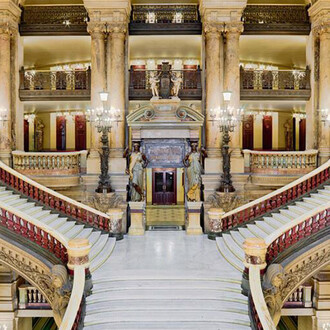At first glance our work could not be more different. A closer look reveals a common sensibility about space, representation, material and color. Our connection lies in the intent to deconstruct the formality of our practices and look under the skin for what defines it.
(JW, TW)
Contemporary modernist/expressionist painter Jim Watt and photo-based new media artist Tom White join forces for a show of contrasting styles with startling similarities beneath the surfaces of their divergent techniques.
Both have extensive tenure in the design world. Watt’s accolades as an architect and restaurant designer include major contributions to the renaissance of Asbury Park among other cities. White as an award-winning art director, designer & illustrator whose clients span every major industry. White is also a founder and resident artist at Exhibit No.9.
“Beyond The Obvious” reveals a push-pull tension, the simultaneous influence and departure from their commercial disciplines to their personal work. On the surface, one sees complete differences; raw canvas surface / glossy polished aluminum; organic fluid gestures / linear right angles; layers of paint / photo-based new media; analog / digital.
Based on each artist’s dual practice, without knowing their work, one might attribute Watt’s paintings to White due to his work as an illustrator. Likewise White’s work might be attributed to Watt due to his practice as an architect. But for both Watt & White, fine art and commercial disciplines inform each other and the need to deconstruct and move away from the formal norms of those practices is the “ahah” moment.
For Watt, painting is an integral part of his practice as an architect. He was inspired by architects, artists and critics who believed that painting, sculpture and architecture are not exclusive expressions for an artist. Form, space, material, texture, color and light are common to these languages.
Watt studied under students of Le Corbusier, Alvar Aalto, Luis Kahn and other pillars of modernism and expressionism who expressed their ideas in a variety of mediums. As one of just five graduate students, Watt was accepted into the prestigious Master of Architecture program at Princeton University. There, he studied with masters such as Michael Graves and Enrique Miralles who stressed that architects must paint and sculpt to fully realize and express their ideas.
On the other hand, White’s approach to his work is quite varied. His use of photo-based digital media allows him to experiment constantly with new ideas. He is one of the early pioneers of digital media in the arts. He was one of the first users of Photoshop and his discovery of digital media was akin to “a duck finding water”.
Informed by his training in the traditional printmaking techniques of dark room, stone lithography and copper plate etching, White moved to digital media and never looked back. It is important for White to test the traditional understandings of photography and fine art and challenge the viewer’s perception of the image’s subject matter and medium.










